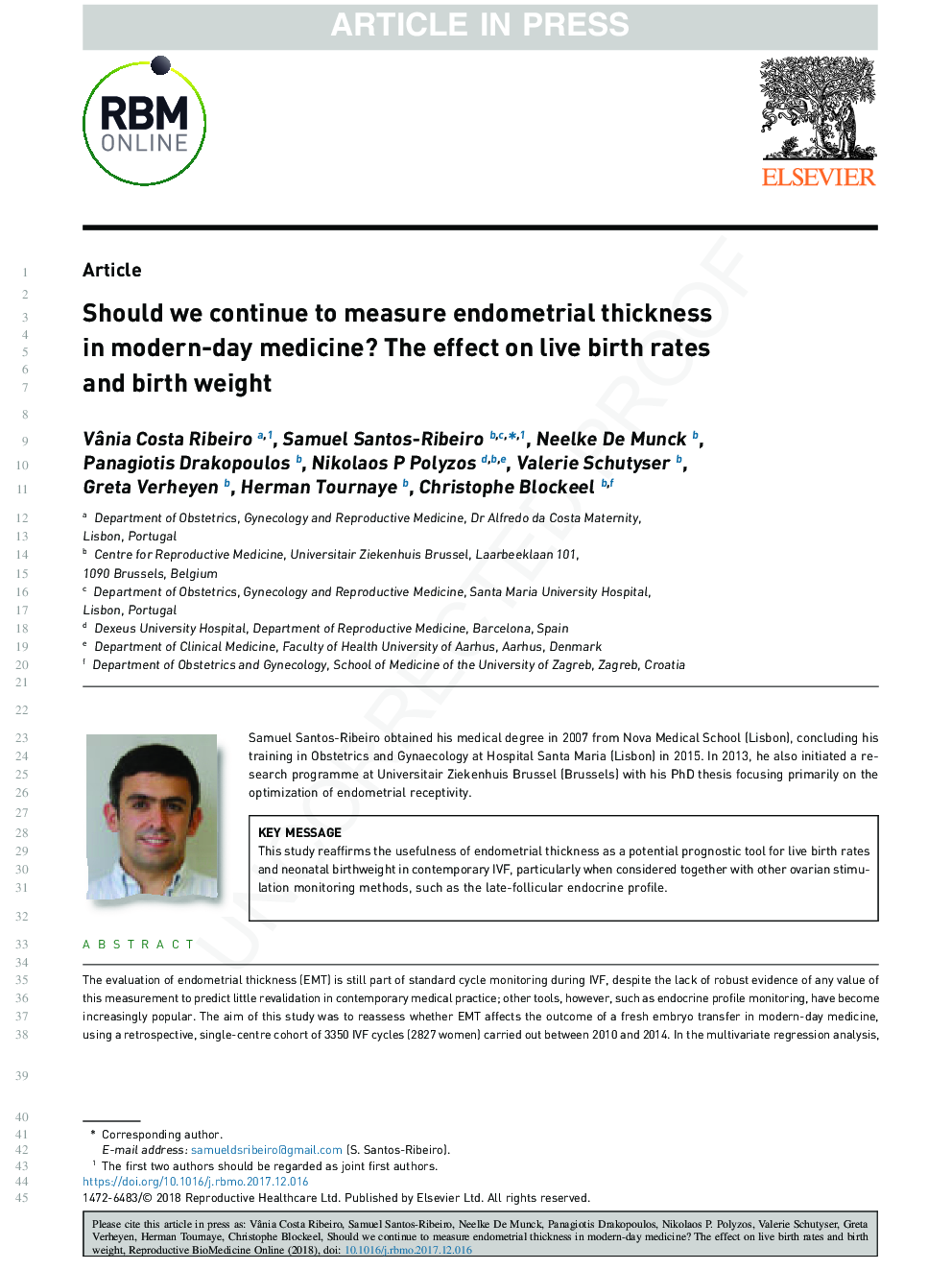| Article ID | Journal | Published Year | Pages | File Type |
|---|---|---|---|---|
| 8783871 | Reproductive BioMedicine Online | 2018 | 11 Pages |
Abstract
The evaluation of endometrial thickness (EMT) is still part of standard cycle monitoring during IVF, despite the lack of robust evidence of any value of this measurement to predict little revalidation in contemporary medical practice; other tools, however, such as endocrine profile monitoring, have become increasingly popular. The aim of this study was to reassess whether EMT affects the outcome of a fresh embryo transfer in modern-day medicine, using a retrospective, single-centre cohort of 3350 IVF cycles (2827 women) carried out between 2010 and 2014. In the multivariate regression analysis, EMT was non-linearly associated with live birth, with live birth rates being the lowest with an EMT less than 7.0âmm (21.6%; P < 0.001) and then between 7.0âmm and 9.0âmm (30.2%; P = 0.008). An EMT less than 7.0âmm was also associated with a decrease in neonatal birthweight z-scores (â0.40; 95% CI â0.69 to â0.12). In conclusion, these results reaffirm the use of EMT as a potential prognostic tool for live birth rates and neonatal birthweight in contemporary IVF, namely when considered together with other ovarian stimulation monitoring methods, such as the late-follicular endocrine profile.
Related Topics
Health Sciences
Medicine and Dentistry
Obstetrics, Gynecology and Women's Health
Authors
Vânia Costa Ribeiro, Samuel Santos-Ribeiro, Neelke De Munck, Panagiotis Drakopoulos, Nikolaos P. Polyzos, Valerie Schutyser, Greta Verheyen, Herman Tournaye, Christophe Blockeel,
